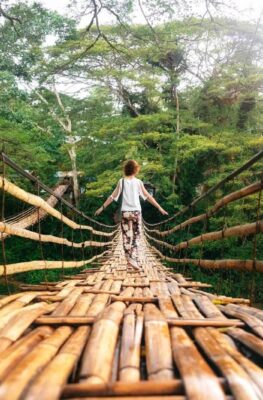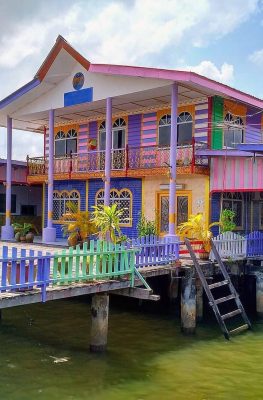Published on April 29, 2016

Mother and child in historical Imperial costume. Image courtesy of Nguyen Hung Vu/Creative Commons
Locals in Southeast Asia take great pride in their national costumes, and – within reason – are proud to have you try them on as well.
That should reassure tourists who worry about being tarred for “cultural appropriation” by social-justice-savvy friends. Contrary to campus cries of “we’re a culture, not a costume“, trying on a costume is completely acceptable if you want to immerse yourself in the local culture.
We did say within reason, and here it is: Locals tend not to disapprove of foreigners wearing their traditional costumes, so long as no ridicule or insult is communicated by its use.
Australian blogger Mabel Kwong suggests three situations where wearing a foreign culture’s attire exempts you from accusations of appropriation – we thought it might be useful to examine how they might apply to common situations travelers in Southeast Asia might face.
First, Mabel explains, “wearing cultural attire as part of formal ceremonies allows us to immerse ourselves in unfamiliar customs.” In the Philippines, for example, a foreigner wearing a barong is pretty common in weddings: after all, the barong is acceptable formal attire throughout the country, regardless of your country of origin, and feels much more comfortable in the tropical heat than the Western three-piece suit!

Boy in traditional Brunei attire. Image courtesy of Brunei Tourism.
So when visiting the Philippines, do wear a barong if invited to a wedding, fiesta, or business get-together. Nobody will chide you for your choice of attire – in fact, Filipinos love that you’re paying respect to the local culture by rocking that barong!
Mabel continues: “Within an educational setting, donning traditional garments for cultural performances can help us understand the history of other ethnicities.” Such an educational setting exists in places like Viet Nam‘s Tu Duc Tomb in the city of Hue. As part of the tour of one of Imperial-era Viet Nam’s Nguyen Kings’ tombs, visitors can dress up as an King and Empress for the day, and have a picture taken for posterity.

Man and woman wearing longyi in Myanmar. Image courtesy of Andrew/Creative Commons
Finally, Mabel explains: “Wearing cultural attire at festivals potentially makes us more approachable to different races, serving as conversation starters.” In Myanmar, where the longyi is still a daily-wear outfit used by the majority of citizens, foreigners sometimes take a chance on wearing a longyi as well.
Like the barong of the Philippines, the longyi is a practical outfit: it preserves the modesty of wearers by covering the legs completely, but provides a level of ventilation that no trousers can provide. Both are equally essential in conservative yet tropical Myanmar. Western travelers – particularly those who aren’t used to the heat, but who want to stay on locals’ good side – split the difference by wearing a longyi.
Wearing a longyi gives you an additional point of contact with locals who are glad to show you how to wear one properly, and who will gladly explain the difference between the men’s and women’s versions.
We feel it’s important, though, to steer clear from attire that has obvious religious significance to locals. In Brunei, for example, the black cap known as the songkok is associated with Muslim men in particular. If you do not belong to the Muslim faith, do not buy or wear a songkok in public in Brunei – otherwise you’ll end up looking like you’re pretending to be something that you’re not, which is the very definition of the wrong kind of cultural appropriation!






